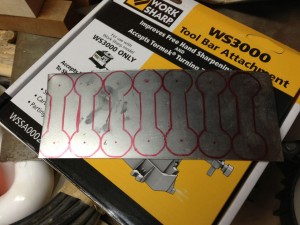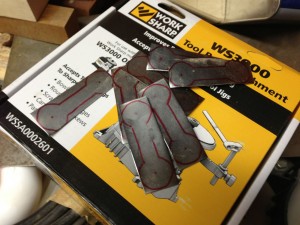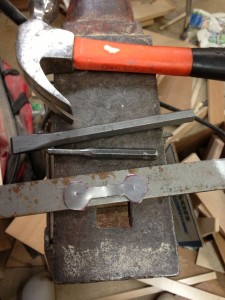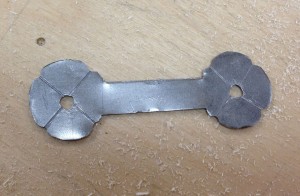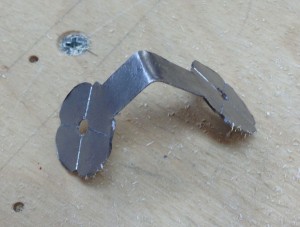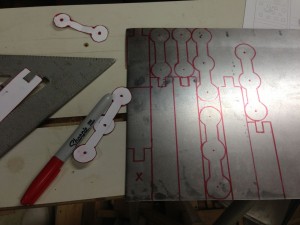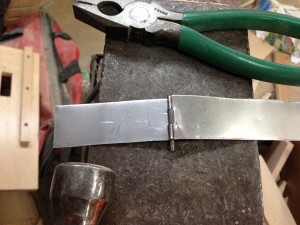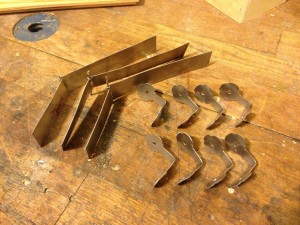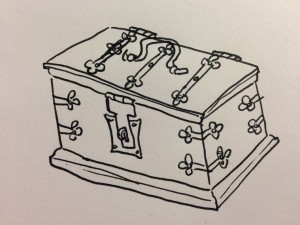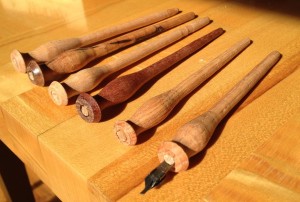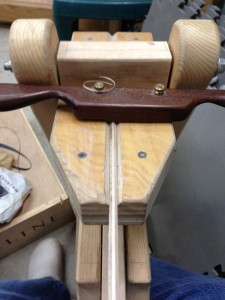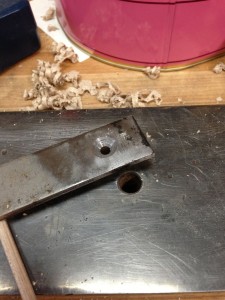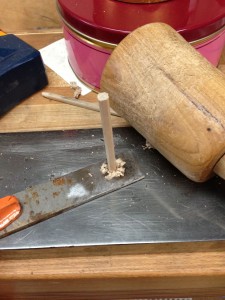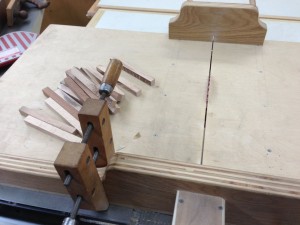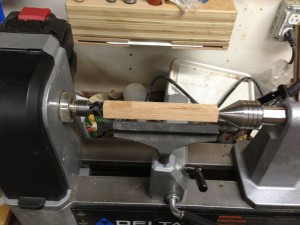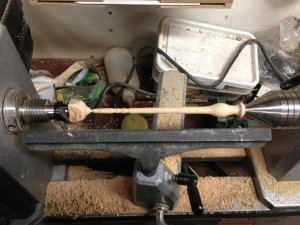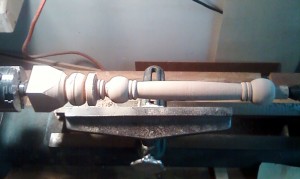Last weekend I took my concept and materials up to Dad’s shop to start making things. The first day I was on my own, so I decided to stick to things that didn’t require much in the way of power tools that I didn’t know how to operate. This meant it was time to play with metal.
I started simple, with the straps for the corners of the box. I drew up a paper template and transferred it onto my metal. Between the various processes I needed to use to fabricate these I knew they wouldn’t be perfect, so I didn’t get too worked up over precision at this point.
First I cut the pieces apart on the Beverly shear (that is much nicer and sharper than my Harbor Freight knock-off). Unfortunately, I insisted on a design with inside curves and corners that the shear wasn’t able to cut. This meant spending some time with chisels.
I cut the rough outline out with a cold chisel, using the other end of my dowel making tool underneath it so I didn’t wreck the anvil face. Then it went to the drill press for holes and the grinding wheel to clean up the edges.
A few light taps with the chisel and some time with a square file made the straps a little bit decorative.
Then I bent them over the side of the anvil. That’s one done. Seven more to go!
Next it was time to lay out the hinges and some ill fated bonus bits. You can see here some of the templates I was using. Again, I knew the hinges wouldn’t fit exactly right without some filing, so I just got them in the right general shape at this point.
A bit of cutting, bending, and filing got them in working order, with bits of coat hanger wire serving as hinge pins. The final shape of the hinge straps is yet to be achieved, but the basic concept is there.
Voila! A bunch of corner straps and hinges. These have to wait a while before they get into the action again. First I have to work out the lock…

